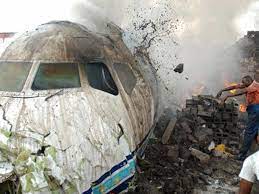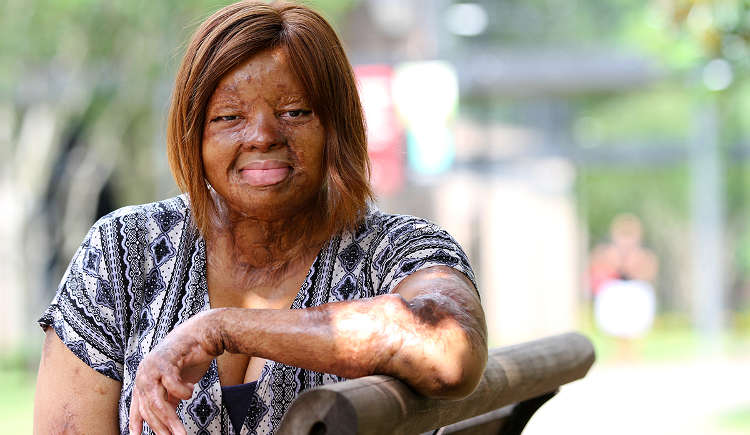On the 10th of December 2005, Nigeria experienced a tragic airline disaster that cannot be forgotten in history. The crash, according to reports, happened between Port Harcourt and Abuja and claimed the lives of about 108 people, leaving just two survivors.
The airline crash, popularly known as the Sosoliso crash, is Sosoliso Airlines Flight 1145 (SO1145/OSL1145), an aircraft of the McDonnell Douglas DC-9-32.
After conducting an investigation into the disaster, Nigeria’s Accident Investigation Bureau came to the conclusion that the pilot’s choice to continue descending toward the airport even after the aircraft had passed the minimum decision altitude was to blame. While experiencing wind shear, the pilots chose to turn around. This choice was also made too late because the plane was still not set up for a go-around and their altitude was now too low.
The airplane was reportedly carrying about 110 passengers and at around 2:00 pm (14:00 pm) slammed into the ground, crashed, and caught fire.

About Sosoliso Aircraft
Sosoliso Airlines Limited is a carrier of domestic scheduled passengers, which has had its headquarters in Ikeja, Lagos State, for most of its history. Its original headquarters were located in Enugu on the grounds of the airport.
Sosoliso aircraft was founded in 1994, and operations got underway in July 2000. Flights were offered by Sosoliso Airlines to Enugu, Port Harcourt, Owerri, Abuja, and Lagos. According to the reports gathered, 2005 was the airline’s first and last air crash since it was established.
The MacDonnell Douglas Aircraft
The McDonnell Douglas DC-9, with its two Pratt & Whitney JT8D-9A engines and serial number 47562/685, was produced in 1972. It was registered in Nigeria on June 12, 2003, and JAT Airways and Sosoliso Airlines Ltd. were its owners and operators. The aircraft certificate was granted on March 17, 2005, and another inspection was scheduled for June 27, 2006. At the time of the crash, the aeroplane was said to be airworthy.
Passengers on the Soliso Aircraft
On the 10th of December, 2005, there were 7 crew members and 103 passengers on board Flight 1145. Most passengers were young people travelling home for the holidays between the ages of 12 and 16. In a report published, it was said that about 60 secondary school students from Nigeria’s Federal Capital Territory’s Loyola Jesuit College were among the passengers.
At first, Loyola Jesuit College students from Port Harcourt took buses to get from their homes to school. But in the 1990s, an increase in crime along the roadways led several parents to worry that driving was too risky. When Sosoliso Airlines started operating between Port Harcourt and Abuja in 2001, parents boarded the flights with their kids.
Along with televangelist Bimbo Odukoya, pastor of the Fountain of Life Church, two volunteers for Medecins Sans Frontieres/Doctors Without Borders, one an American and the other a French national, were also travelling to Port Harcourt.
On the list of passengers was Uche Marcus Okoro, national president of the Petroleum and Natural Gas Senior Staff Association of Nigeria (PENGASSAN), who was travelling back from a union conference. The pilot was Benjamin Adekunle Adebayo, a 48-year-old Nigerian with 10,050 hours of total flying time, 1,900 of which were on the DC-9.
On July 7, 2005, the pilot completed his final simulator training at the Pan American International Flight Academy in Miami. Gerad Yakubu Andan, a 33-year-old Ghanaian with 920 hours of total flying experience, 670 of which were on the type, served as the first officer. In August 2005, he underwent his last simulator training, and the results were satisfactory.

Sosoliso Crash
Flight 1145 was a regularly scheduled domestic passenger flight that was bound for Port Harcourt, the seat of Rivers State, from Abuja, the capital of Nigeria. With 103 passengers and 7 staff members on board, the plane departed from Nnamdi Azikiwe International Airport at 12:25 p.m. At the controls were Captain Adebayo (48), the pilot; First Officer Andan (33), his co-pilot, were at the controls. Before making its final approach to Port Harcourt, the trip was uneventful.
At 13:04 p.m. on Wednesday, the aircraft was established on the glide slope at a distance of 6 nautical miles from the airport. The aeroplane had just entered a headwind and tailwind area of bad weather. The pilots then asked for permission to use Runway 21 for a landing. The controller subsequently informed Flight 1145 that there was a chance of rain at the airport. The controller then gave the go-ahead for the aircraft to land on Runway 21 but cautioned the pilots that there was a chance of hydroplaning since the runway might be a little damp. Following that, the flying crews acknowledged this message.
Then, until it had passed the decision height of 307 feet, Flight 1145 began to drop. Visibility decreased as the rain got heavier. The problem was made worse by the runway’s lack of lighting. At a height of roughly 200 feet, Captain Adebayo requested a go-around (missed approach) because he could not see the illuminated runway through the rain of approximately 120 ft above the ground. About 100 feet below the decision altitude, this call was made. He made the wrong choice, though, since Flight 1145 was already flying too low to make a turn. The flight crews then attempted to add more propulsion when the “TOO LOW-GEAR” alarm began to ring. The aircraft kept descending because the flight crews were unable to quickly arrange its configuration.
The DC-9 then crashed into the grassy area that was in the middle of the runway and the taxiway. Then it slid and ran into a nearby concrete drainage culvert. The impact then destroyed the aeroplane. The engine was stuck in the drainage and the rear part was quickly damaged. The aeroplane crashed, the fuel leaked, and it caught fire. The cockpit and fuselage, which were now engulfed in flames, continued to slide for a few hundred meters before coming to rest on the taxiway.
Only two of the 103 passengers and 7 crew members survived, despite the fact that seven people were first saved. Many passengers were injured at the initial collision but perished in the ensuing fire. Later, other travellers passed away from their wounds.
There was only one fire truck and no ambulances at Port Harcourt Airport. All seven crew members perished in the crash. Kechi Okwuchi is the lone survivor from her school out of the 60 teenagers from Ignatius Loyola Jesuit College, a boarding school in Abuja, who were all slaughtered. Kechi received medical care at both Shriners Hospitals for Children in Galveston, Texas, and Milpark Hospital in Johannesburg, South Africa. The other survivor was Bunmi Amusan, who had 40% of her body burned.
The Aftermath of the Sosoliso Aircraft
According to the International Civil Aviation Organization (ICAO), the airline must only give each family of a casualty of an air crash 3 million naira, or US$18,157. Harold Demuren, the director-general of the Nigerian Civil Aviation Authority (NCAA), announced in January 2009 that the relatives of the victims of the plane disaster will receive compensation and that Sosoliso had already sent $2.3 million into an escrow account to do so.
In response to the tragedy, Olusegun Obasanjo, the country’s then-president, cut short his trip to Portugal and vowed to revamp Nigeria’s aviation industry and “fix gaps” in the nation’s aviation safety regulations. Later, a crisis meeting was convened, and some senior aviation officers were fired.






Comments
Nzemeke Olisemeke
3 years agoIts the fault of both the pilot and the air crews